Sustainable Operation of Active Distribution Networks
Abstract
1. Introduction
- The work presented in this paper examines the optimization of distributed small residential prosumers of a distribution network. A large number of operation and technical limitations of the ADN and its components was ensured and the proposed algorithm achieved the highest possible reduction in the daily operation cost of the ADN.
- The implementation of the proposed method was based on the exploitation of a hierarchical MAS that allows for the optimization of the complex examined power system in a single optimization level. The goals of each type of agent (smart residential building prosumers, PEV aggregators, and RES) and how they cooperated to accomplish them were fully outlined. The coordinated optimal operation of all types of agents was achieved and the suggested approach for ADN’s optimal operation aligns with the growing need for sustainable development.
- The thermal and electrical loads of residential buildings and an aggregate battery of numerous plug-in electric vehicles were modeled in detail.
- A simple and effective definition of the buildings’ cluster flexibility to adjust their power by exploiting fuzzy logic was first proposed in this article.
- Smart power dispatch techniques were applied to buildings and PEV clusters as well as to single residential buildings and PEVs. This kept the needed computation time very low, as the minimum possible number of decision variables was achieved.
2. Description of the Suggested Multi-Agent System Structure
2.1. Local Agents
2.2. Cluster Agents
2.3. Active Distribution Network Management Agent
3. Agents’ Modeling
3.1. Local Agents
3.1.1. Building Thermal Load Agent (BTL/A)
3.1.2. Building Electrical Load Agent (BEL/A)
3.1.3. Plug-in Electric Vehicle Agent (PEV/A)
3.2. Cluster Agents
3.2.1. Cluster of Building Thermal Loads Agent (CBTL/A), Cluster of Building Electrical Loads Agent (CBEL/A)
3.2.2. Cluster of Plug-In Electric Vehicles Agent (CPEV/A)
3.3. Active Distribution Network Management Agent (ADNM/A)
- Building Constraints
- Plug-In Electric Vehicles Constraints
- Power Balance Constraints
- Active Distribution Network Constraints
4. Case Study
5. Conclusions
Author Contributions
Funding
Institutional Review Board Statement
Informed Consent Statement
Data Availability Statement
Conflicts of Interest
References
- Matrawy, K.; Mahrous, A.-F.; Youssef, M. Energy management and parametric optimization of an integrated PV solar house. Energy Convers. Manag. 2015, 96, 377–383. [Google Scholar] [CrossRef]
- Karami, N.; Moubayed, N.; Outbib, R. Energy management for a PEMFC-PV hybrid system. Energy Convers. Manag. 2014, 82, 154–168. [Google Scholar] [CrossRef]
- Pascual, J.; Barricarte, J.; Sanchis, P.; Marroyo, L. Energy management strategy for a renewable-based residential microgrid with generation and demand forecasting. Appl. Energy 2015, 158, 12–25. [Google Scholar] [CrossRef]
- Choudar, A.; Boukhetala, D.; Barkat, S.; Brucker, J.M. A local energy management of a hybrid PV-storage based distributed generation for microgrids. Energy Convers. Manag. 2015, 90, 21–33. [Google Scholar] [CrossRef]
- Arcos-Aviles, D.; Pascual, J.; Marroyo, L.; Sanchis, P.; Guinjoan, F. Fuzzy logic-based energy management system design for residential grid-connected microgrids. IEEE Trans. Smart Grid 2018, 9, 530–543. [Google Scholar] [CrossRef]
- Carli, R.; Dotoli, M. Decentralized control for residential energy management of a smart users’ microgrid with renewable energy exchange. IEEE/CAA J. Autom. Sin. 2019, 6, 641–656. [Google Scholar] [CrossRef]
- Rastegar, M.; Fotuhi-Firuzabad, M.; Zareipour, H. Home energy management incorporating operational priority of appliances. Int. J. Electr. Power Energy Syst. 2016, 74, 286–292. [Google Scholar] [CrossRef]
- Javaid, N.; Ullah, I.; Akbar, M.; Iqbal, Z.; Khan, F.A.; Alrajeh, N.; Alabed, M.S. An Intelligent Load Management System with Renewable Energy Integration for Smart Homes. IEEE Access 2017, 5, 13587–13600. [Google Scholar] [CrossRef]
- Shakouri, H.; Kazemi, A. Multi-objective cost-load optimization for demand side management of a residential area in smart grids. Sustain. Cities Soc. 2017, 32, 171–180. [Google Scholar] [CrossRef]
- Alibabaei, N.; Fung, A.S.; Raahemifar, K.; Moghimi, A. Effects of intelligent strategy planning models on residential HVAC system energy demand and cost during the heating and cooling seasons. Appl. Energy 2017, 185, 29–43. [Google Scholar] [CrossRef]
- Yoon, J.H.; Bladick, R.; Novoselac, A. Demand response for residential buildings based on dynamic price of electricity. Energy Build. 2014, 80, 531–541. [Google Scholar] [CrossRef]
- Anvari-Moghaddam, A.; Monsef, H.; Rahimi-Kian, A. Optimal smart home energy management considering energy saving and a comfortable lifestyle. IEEE Trans. Smart Grid 2015, 6, 324–332. [Google Scholar] [CrossRef]
- Arun, S.L.; Selvan, M.P. Intelligent Residential Energy Management System for Dynamic Demand Response in Smart Buildings. IEEE Syst. J. 2018, 12, 1329–1340. [Google Scholar] [CrossRef]
- Estiri, H.; Zagheni, E. Age matters: Ageing and household energy demand in the United States. Energy Res. Soc. Sci. 2019, 55, 62–70. [Google Scholar] [CrossRef]
- Csoknyai, T.; Legardeur, J.; Akle, A.A.; Horváth, M. Analysis of energy consumption profiles in residential buildings and impact assessment of a serious game on occupants’ behavior. Energy Build. 2019, 196, 1–20. [Google Scholar] [CrossRef]
- Kyriakou, D.G.; Kanellos, F.D. Optimal Operation of Microgrids Comprising Large Building Prosumers and Plug-in Vehicles Integrated into Active Distribution Networks. Energies 2022, 15, 6182. [Google Scholar] [CrossRef]
- Turker, H.; Bacha, S. Optimal Minimization of Plug-In Electric Vehicle Charging Cost with Vehicle-to-Home and Vehicle-to-Grid Concepts. IEEE Trans. Veh. Technol. 2018, 67, 10281–10292. [Google Scholar] [CrossRef]
- Godina, R.; Rodrigues, E.; Paterakis, N.; Erdinc, O.; Catalão, J. Innovative impact assessment of electric vehicles charging loads on distribution transformers using real data. Energy Convers. Manag. 2016, 120, 206–216. [Google Scholar] [CrossRef]
- Qian, K.; Zhou, C.; Allan, M.; Yuan, Y. Modeling of load demand due to EV battery charging in distribution systems. IEEE Trans. Power Syst. 2011, 26, 802–810. [Google Scholar] [CrossRef]
- Pirouzi, S.; Aghaei, J.; Niknam, T.; Khooban, M.H.; Dragicevic, T.; Farahmand, H.; Korpas, M.; Blaabjerg, F. Power Conditioning of Distribution Networks via Single-Phase Electric Vehicles Equipped. IEEE Syst. J. 2019, 13, 3433–3442. [Google Scholar] [CrossRef]
- Xiang, Y.; Liu, J.; Liu, Y. Optimal active distribution system management considering aggregated plug-in electric vehicles. Electr. Power Syst. Res. 2016, 131, 105–115. [Google Scholar] [CrossRef]
- Kanellos, F.D. Real-Time Control Based on Multi-Agent Systems for the Operation of Large Ports as Prosumer Microgrids. IEEE Access 2017, 5, 9439–9452. [Google Scholar] [CrossRef]
- Sadati, S.M.B.; Moshtagh, J.; Shafie-khah, M.; Catalão, J.P.S. Smart distribution system operational scheduling considering electric vehicle parking lot and demand response programs. Electr. Power Syst. Res. 2018, 160, 404–418. [Google Scholar] [CrossRef]
- Kanellos, F.D. Optimal Scheduling and Real-Time Operation of Distribution Networks with High Penetration of Plug-In Electric Vehicles. IEEE Syst. J. 2021, 15, 3938–3947. [Google Scholar] [CrossRef]
- Kanellos, F.D.; Kalaitzakis, K.; Psarras, I.; Katsigiannis, Υ. Efficient and robust power and energy management for large clusters of plug-in electric vehicles and distribution networks. IET Energy Syst. Integr. 2022, 4, 393–408. [Google Scholar] [CrossRef]
- Nick, M.; Cherkaoui, R.; Paolone, M. Optimal Planning of Distributed Energy Storage Systems in Active Distribution Networks Embedding Grid Reconfiguration. IEEE Trans. Power Syst. 2018, 33, 1577–1590. [Google Scholar] [CrossRef]
- Nick, M.; Cherkaoui, R.; Paolone, M. Optimal allocation of dispersed energy storage systems in active distribution networks for energy balance and grid support. IEEE Trans. Power Syst. 2014, 29, 2300–2310. [Google Scholar] [CrossRef]
- Sedghi, M.; Ahmadian, A.; Aliakbar-Golkar, M. Optimal storage planning in active distribution network considering uncertainty of wind power distributed generation. IEEE Trans. Power Syst. 2016, 31, 304–316. [Google Scholar] [CrossRef]
- Gungor, V.C.; Sahin, D.; Kocak, T.; Ergut, S.; Buccella, C.; Cecati, C.; Hancke, G.P. Smart grid technologies: Communication technologies and standards. IEEE Trans. Ind. Inform. 2011, 7, 529–539. [Google Scholar] [CrossRef]
- Romano, P.; Paolone, M.; Chau, T.; Jeppesen, B.; Ahmed, E. A high-performance, low-cost PMU prototype for distribution networks based on FPGA. In Proceedings of the 2017 IEEE Manchester PowerTech, Manchester, UK, 18–22 June 2017. [Google Scholar]
- Nguyen, C.P.; Flueck, A.J. Modeling of communication latency in smart grid. In Proceedings of the 2011 IEEE Power and Energy Society General Meeting, Detroit, MI, USA, 24–28 July 2011; pp. 1–6. [Google Scholar]
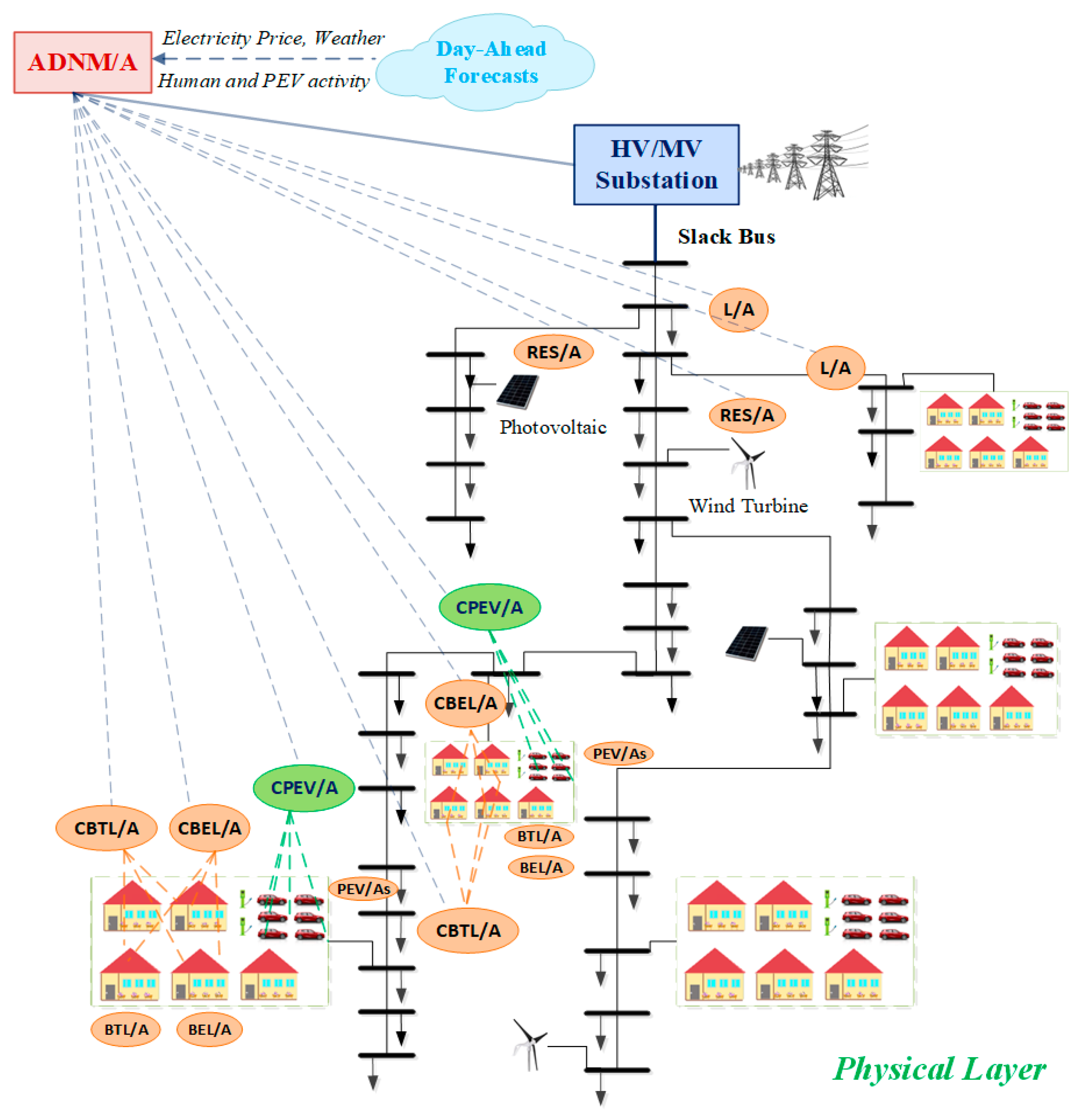
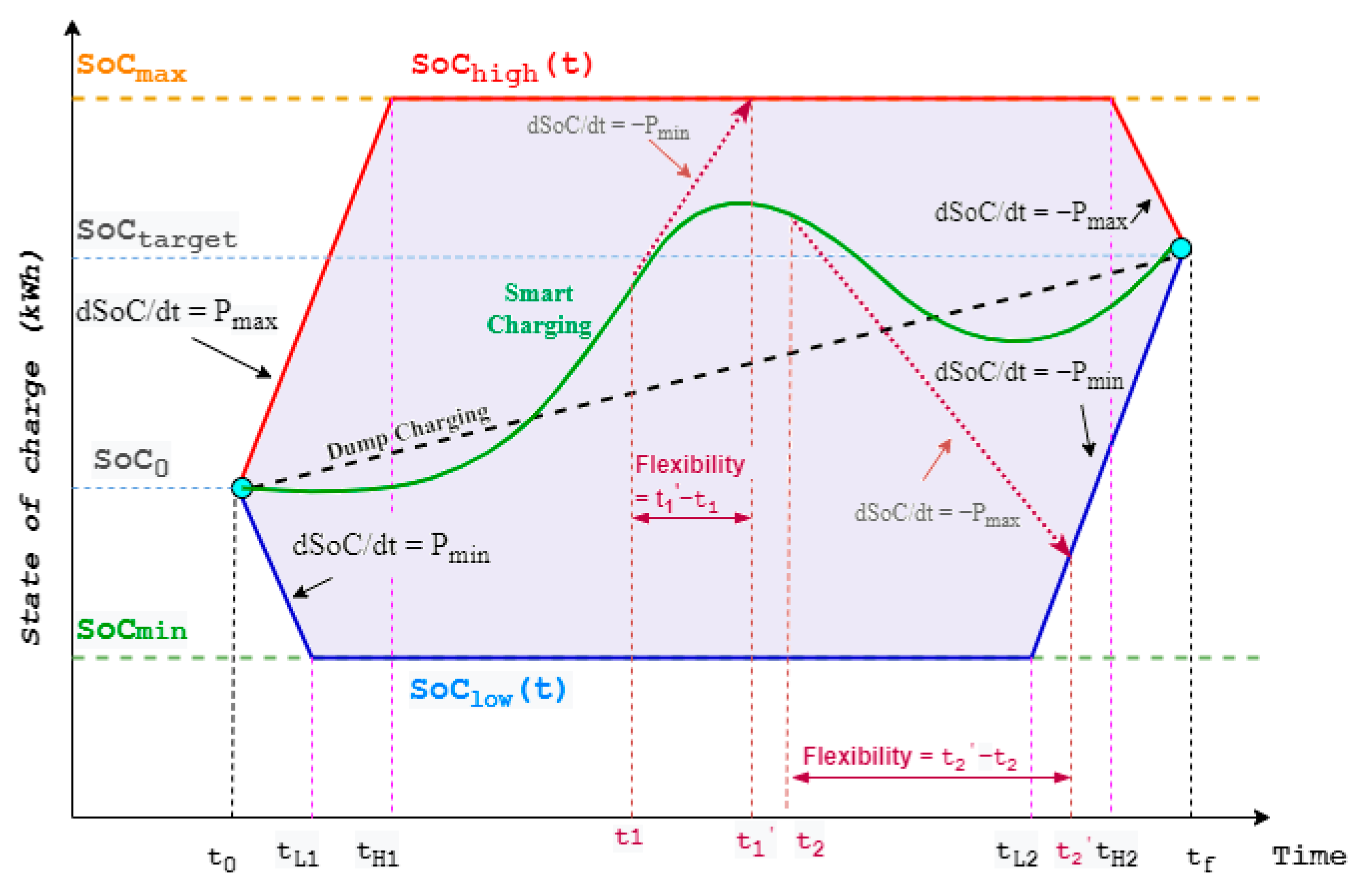

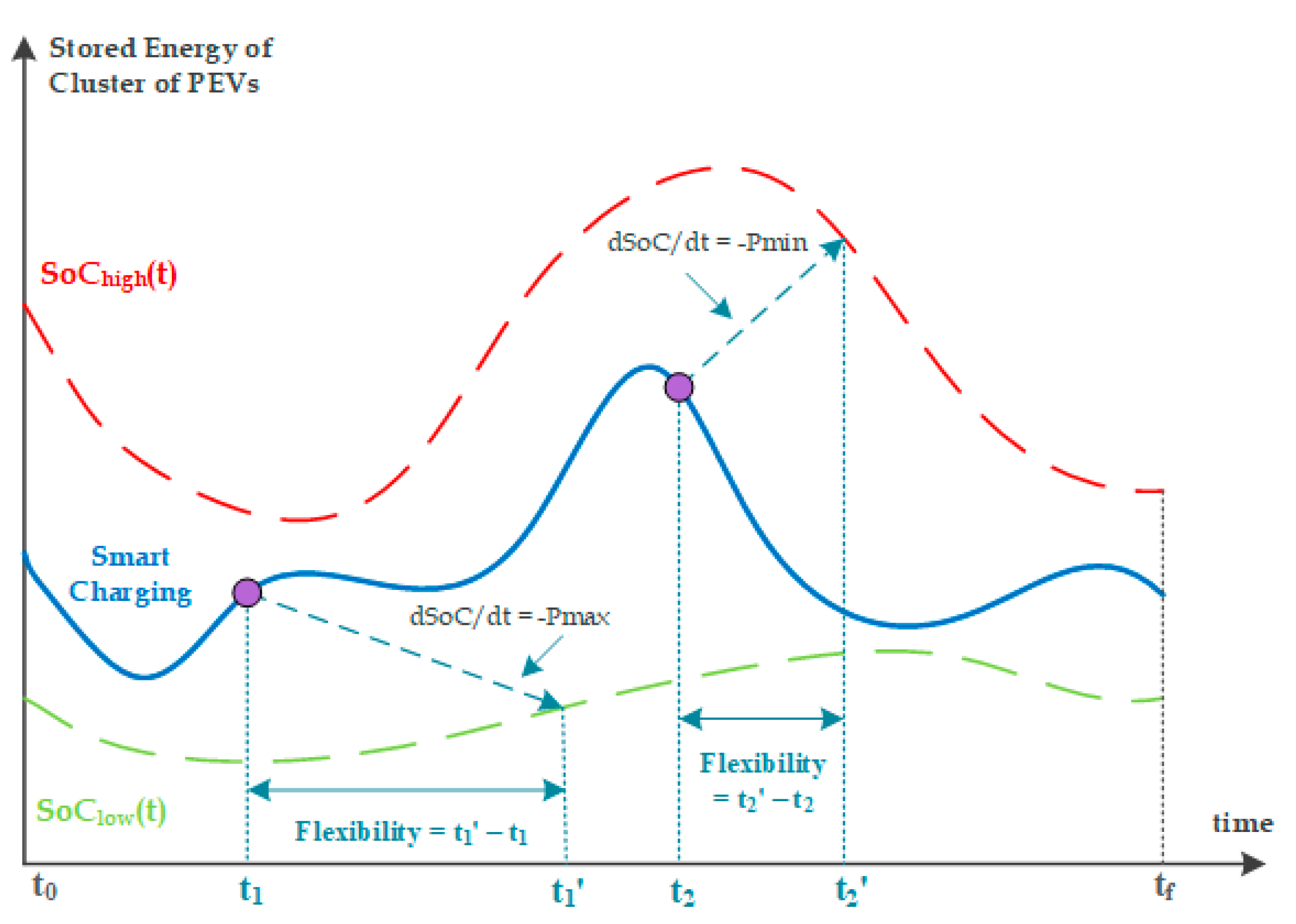

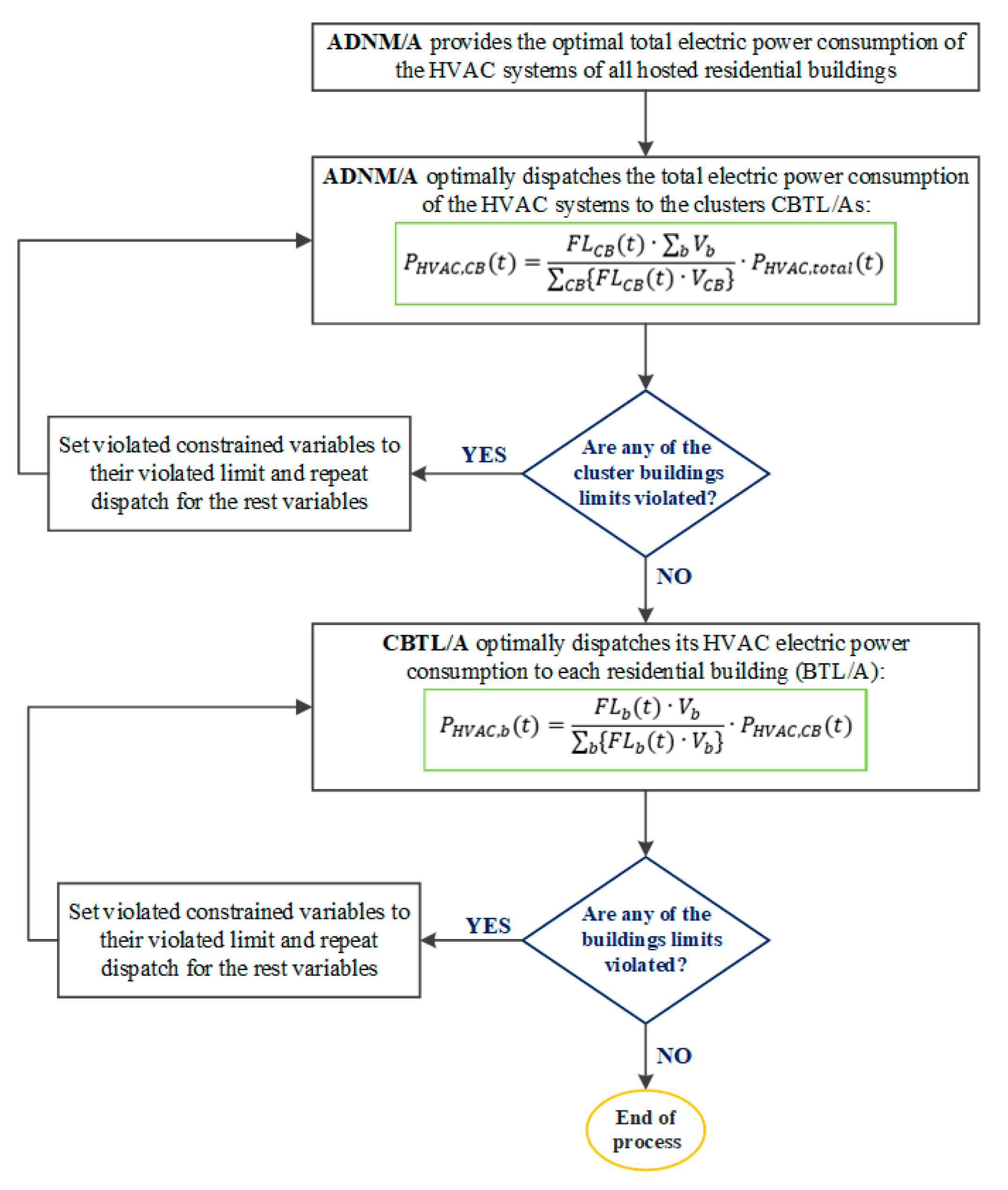
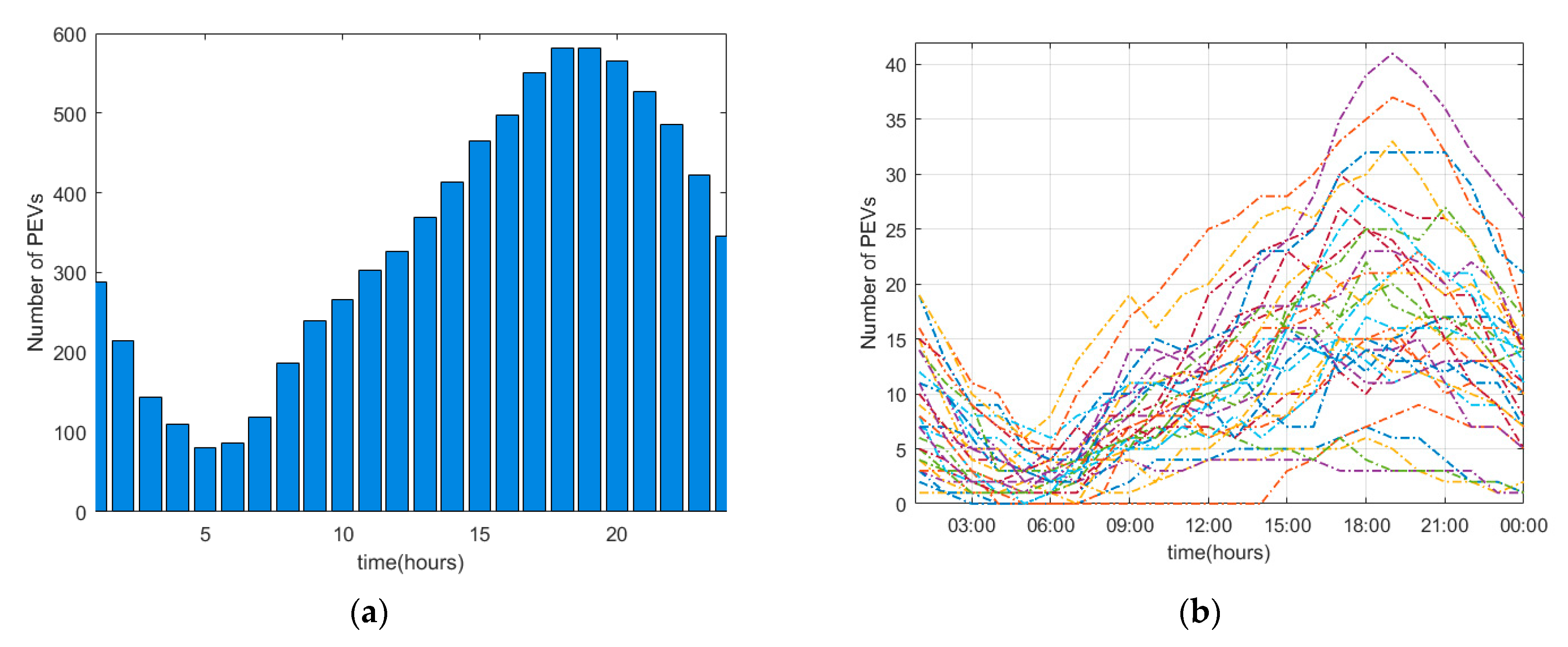
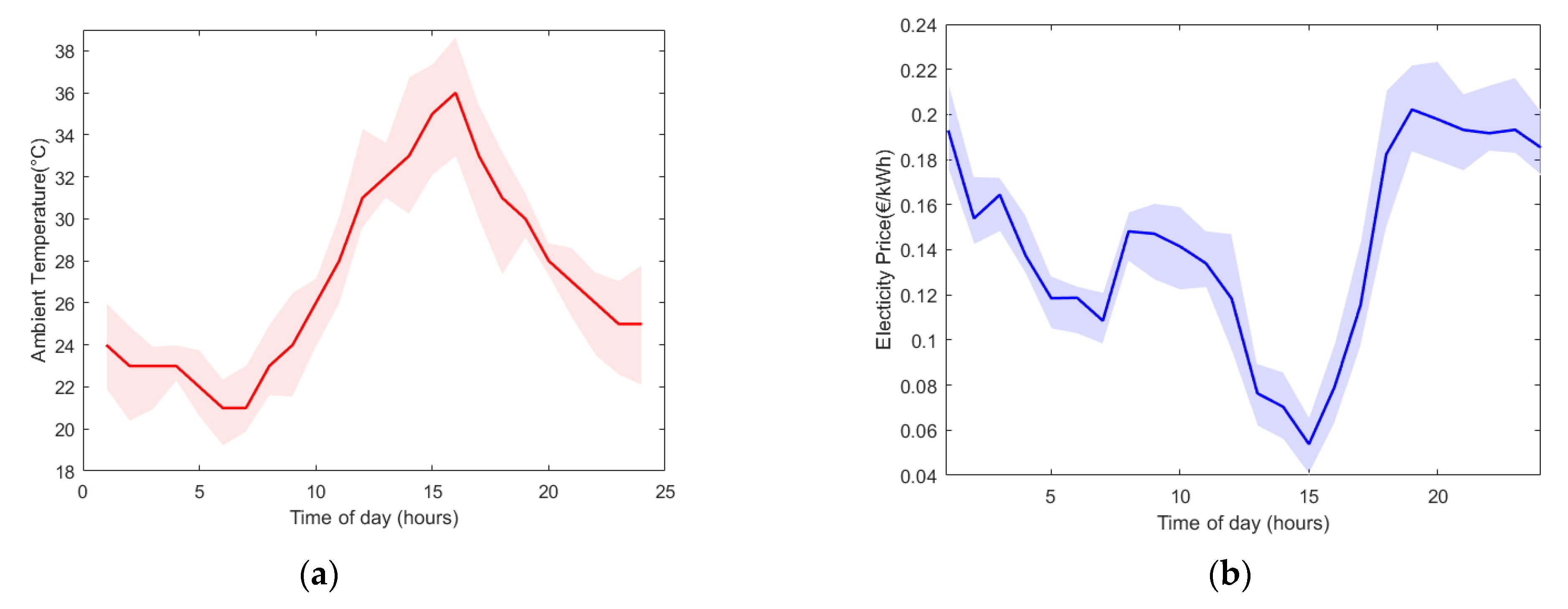
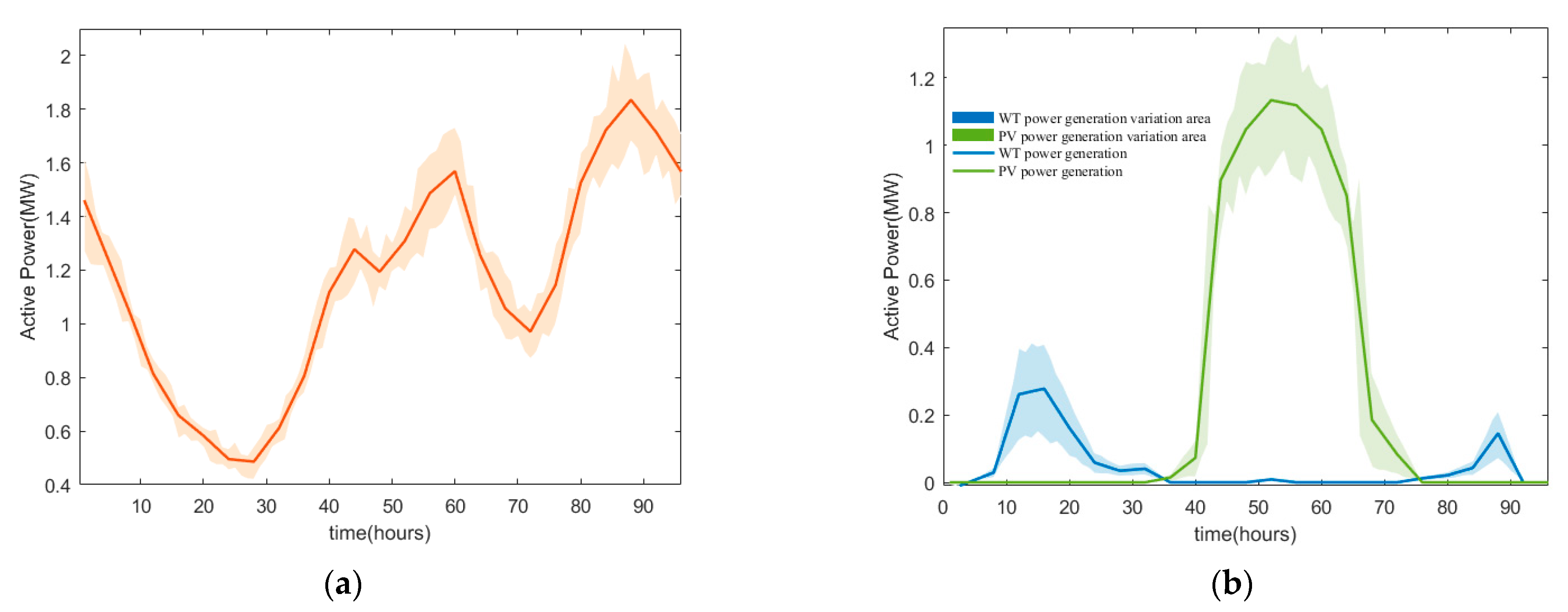

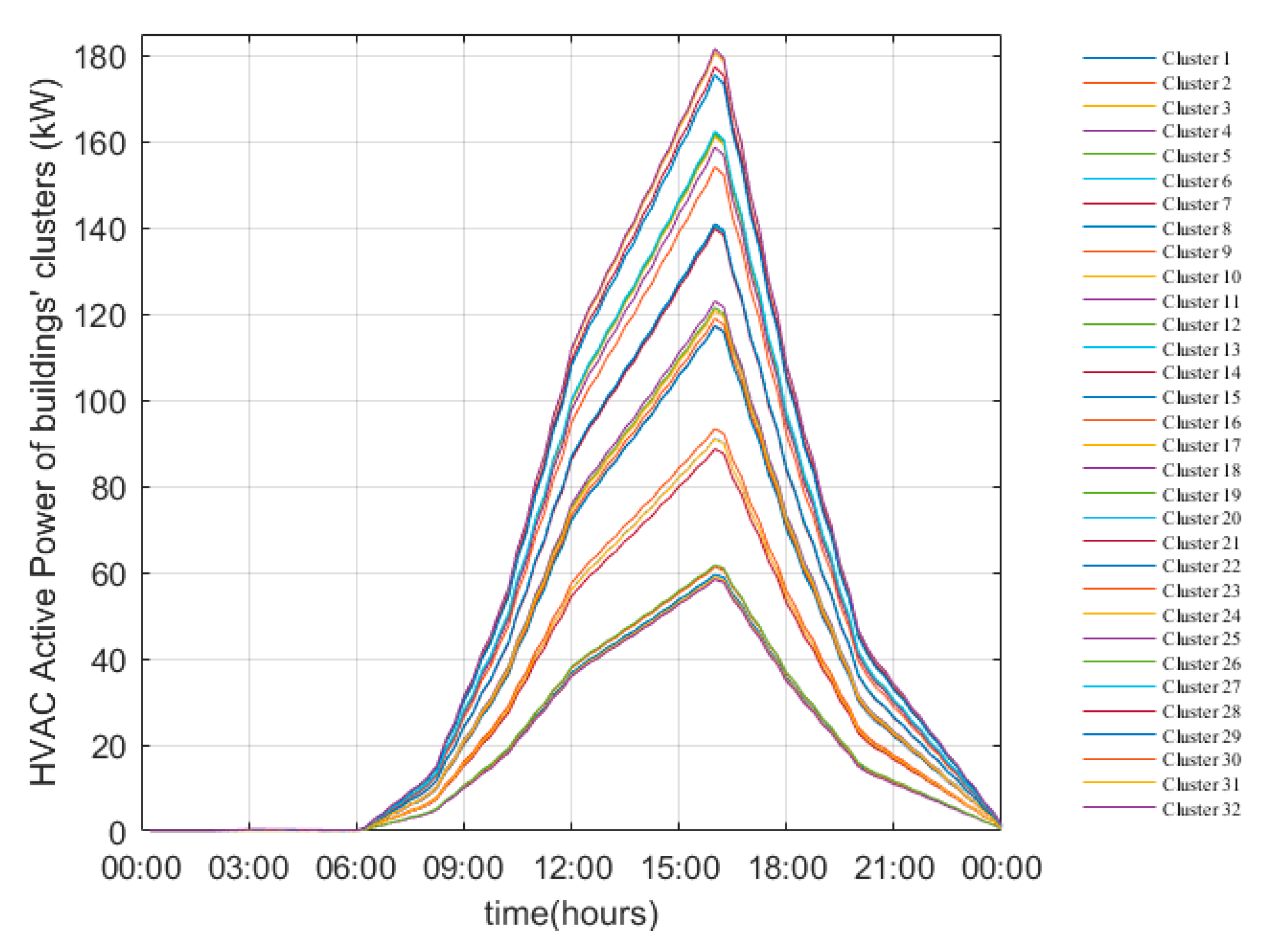
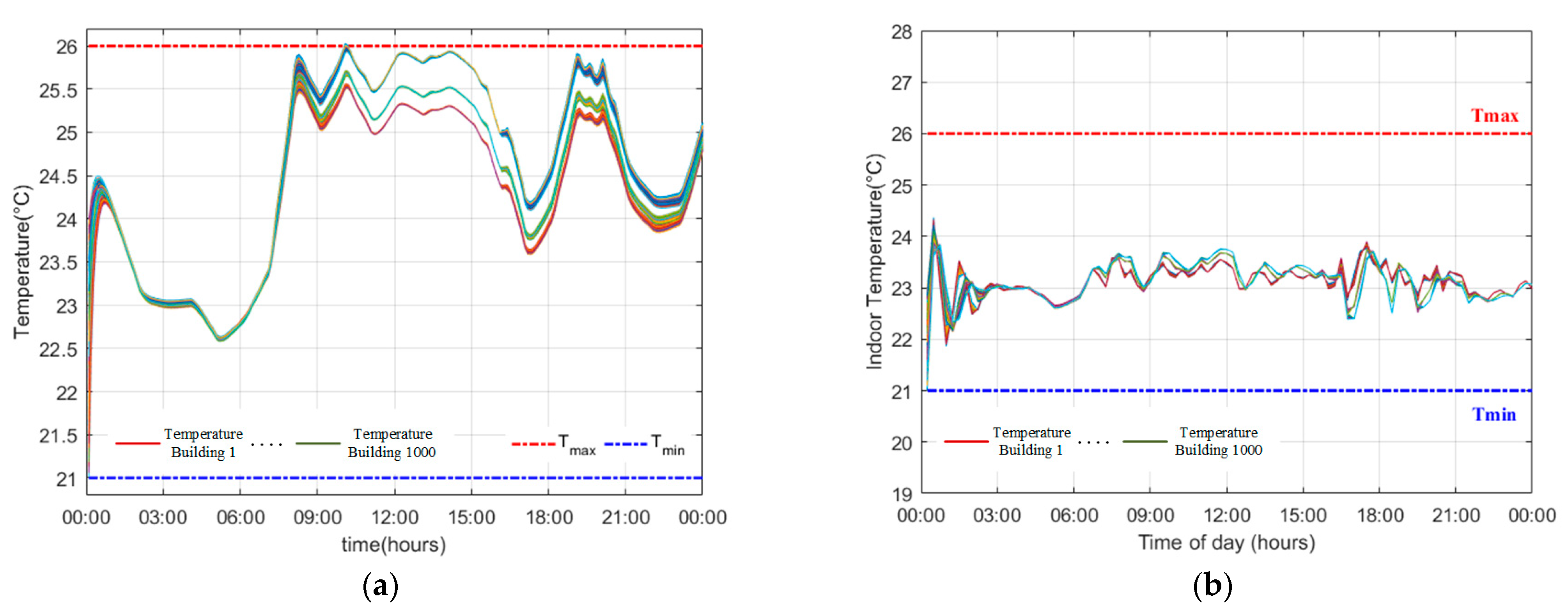




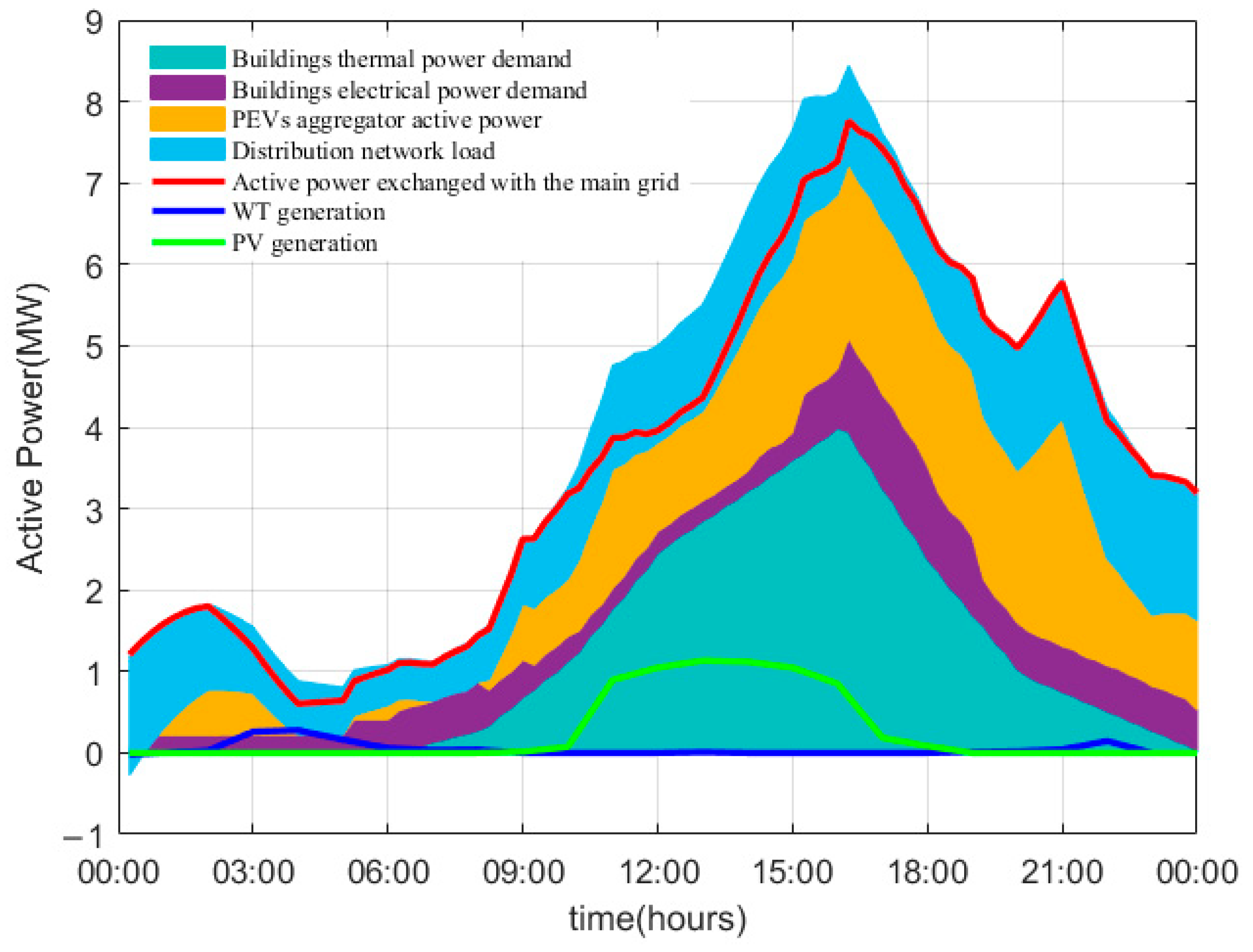
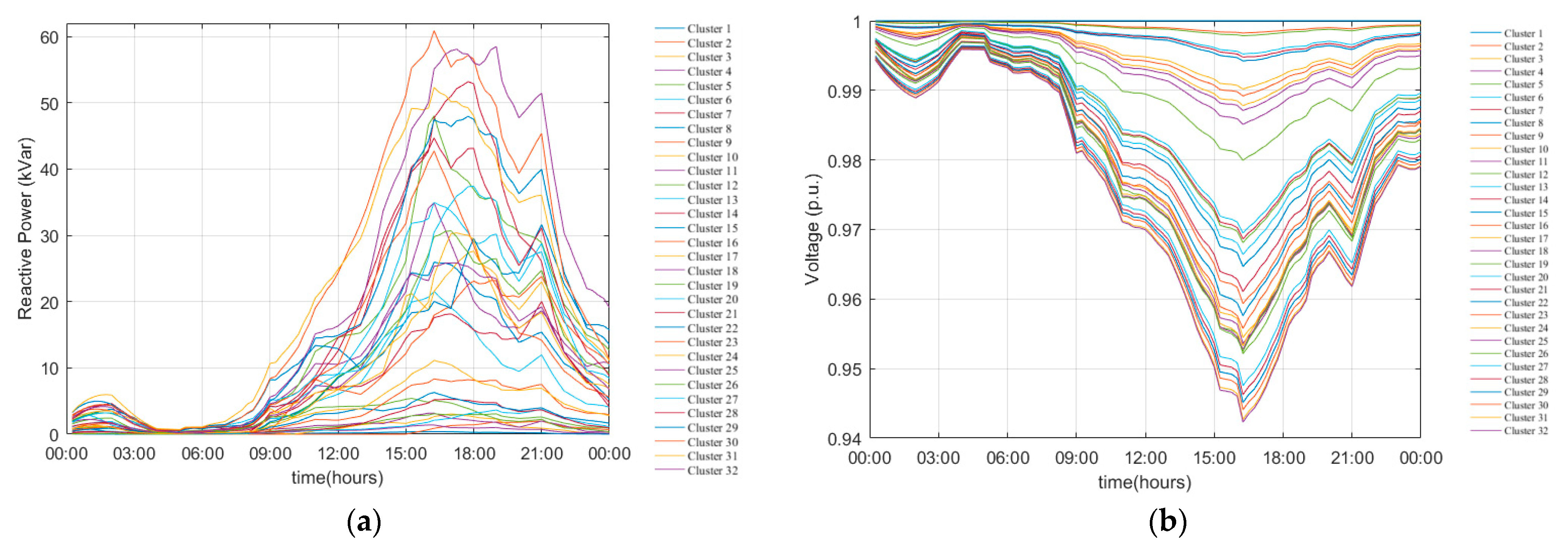
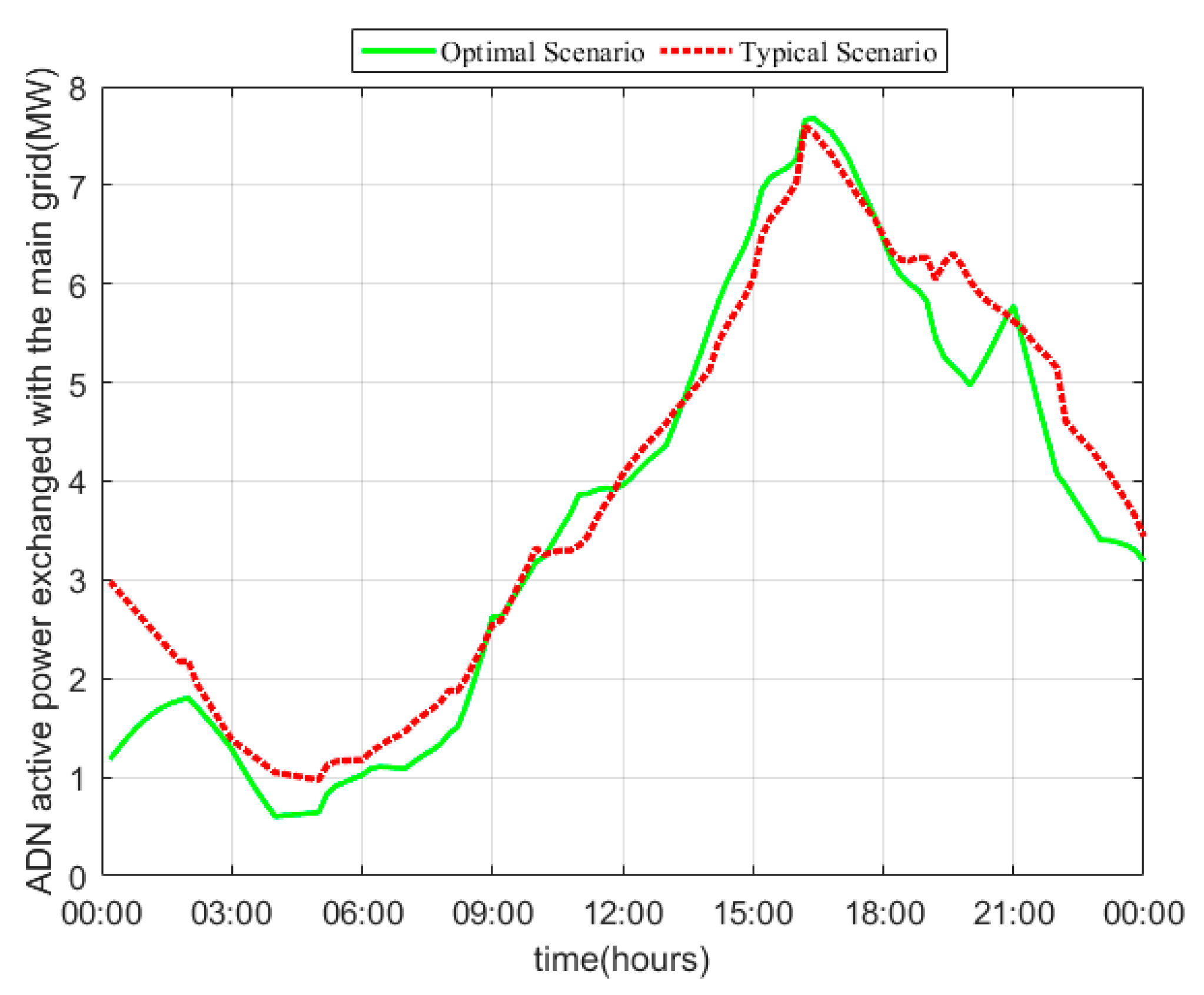
| Cluster of buildings flexibility | ||||||
| VS | S | M | L | VL | ||
| VS | VS | VS | VS | VS | VS | |
| S | VS | S | S | M | L | |
| M | VS | S | M | L | L | |
| L | VS | M | L | L | VL | |
| VL | VS | L | L | VL | VL |
| Operation Case Study | Optimal without Uncertainty | Optimal with Uncertainty | Typical |
|---|---|---|---|
| Total operation cost (m.u./day) | 12,333 | 12,446.5 | 14,812 |
Disclaimer/Publisher’s Note: The statements, opinions and data contained in all publications are solely those of the individual author(s) and contributor(s) and not of MDPI and/or the editor(s). MDPI and/or the editor(s) disclaim responsibility for any injury to people or property resulting from any ideas, methods, instructions or products referred to in the content. |
© 2023 by the authors. Licensee MDPI, Basel, Switzerland. This article is an open access article distributed under the terms and conditions of the Creative Commons Attribution (CC BY) license (https://creativecommons.org/licenses/by/4.0/).
Share and Cite
Kyriakou, D.G.; Kanellos, F.D. Sustainable Operation of Active Distribution Networks. Appl. Sci. 2023, 13, 3115. https://doi.org/10.3390/app13053115
Kyriakou DG, Kanellos FD. Sustainable Operation of Active Distribution Networks. Applied Sciences. 2023; 13(5):3115. https://doi.org/10.3390/app13053115
Chicago/Turabian StyleKyriakou, Dimitra G., and Fotios D. Kanellos. 2023. "Sustainable Operation of Active Distribution Networks" Applied Sciences 13, no. 5: 3115. https://doi.org/10.3390/app13053115
APA StyleKyriakou, D. G., & Kanellos, F. D. (2023). Sustainable Operation of Active Distribution Networks. Applied Sciences, 13(5), 3115. https://doi.org/10.3390/app13053115






